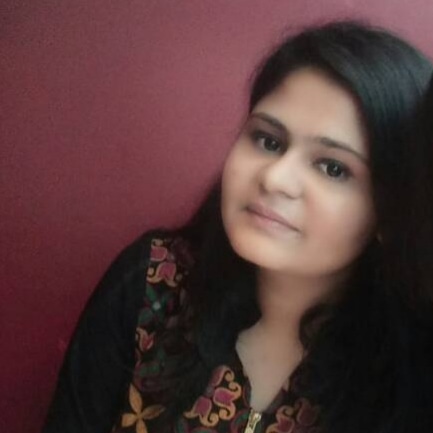
The digital storytelling platforms Humans of Bombay (HOB) and People of India (POI) have been engrossed in a legal battle which has created quite a stir. The entire social media community has concluded that Humans of Bombay itself being an inspired platform of Humans of New York (HONY) cannot challenge any other platform doing the same. But the feud on social – media and the courtroom it seems both have different takes on this intriguing copyright dispute.
Let’s dive into the Facts of the case:
Humans of Bombay (HOB) Founded by Karishma Mehta has filed a suit against People of India (POI) Founded by Drishti Saxena both being storytelling platforms. HOB (Plaintiff) claims operation since 2014 and owns and operates a website by the name www.humansofbombay.in whereas POI (Defendant) has been in operation since 2019 and runs a website called www.peopleofindia.io. The Plaintiff (HOB) has filed the present suit seeking an injunction restraining the infringement of its copyrighted content by the Defendants (POI). This includes alleged infringement of content created by HOB i.e. its literary works, materials, films and various creative expressions.
Humans of Bombay Stories Pvt .Ltd, through its platforms tell the inspiring stories of various individuals. These stories are converted into write ups, posts, interviews etc and posted on its social media platforms. HOB claims that it engages in a substantial amount of research and approaches various individuals who are interested in sharing and narrating their life stories, these stories of individuals/subjects are posted as audio- video works and uploaded on HOB’s website and various social media platforms.
HOB in its allegations claims that the Defendants POI have replicated or substantially copied its stories and posts so as to create an identical platform, it has also interfered in their contracts with the people who have shared their stories on the plaintiff’s website. The cause of action for instituting the present suit arose in 2022 when the plaintiff noticed identical stories being portrayed on the defendant’s social media page for e.g., see here and here which is just one such imitated example . A cease-and-desist notice was sent by the plaintiff on 17th February 2022 to the defendants asking them to refrain from infringement of its copyright. Further, another notice was sent by the plaintiff in July 2023 refraining them from publishing the said content .The Plaintiff then sought for injunction against the defendant’s website and activities, on 18th September 2023 the matter was considered by the court.
Prima Facie Decision
A single bench led by Justice Pratibha .M. Singh observed in the annexure attached in the plaint by HOB, that Prima Facie there was ‘substantial imitation’ in fact in some instances the images were ‘identical’. On 11th October 2023 the parties were ordered by the court to refrain from using each other’s copyrighted works which includes all posts made by POI on its instagram handle as , at mere glance it is evident by the posts made by POI that there is a striking replication of HOB’s instagram posts . The court also made an important clarification applicable to both parties that the materials submitted by individuals/subjects themselves do not carry a copyright claim.
The Bench of Justice Pratibha Singh made the observations by relying upon the Apex Courts decision in the R.G. Anand v. M/S Delux Films case which highlights the legal position that no copyright can be claimed in an idea, but the “expression” of any idea cannot be imitated or copied as the same would constitute as copyright infringement under section 51 of The Copyright Act 1957. This judgment is crucial when it comes to the claim of HOB against POI for adopting a similar business model as the case highlights the position that having a similar business model or idea does not give rise to copyright infringement unless there is a “substantial imitation” or copying in the “expression” of the idea. In conclusion the parties agreed to not copy each other’s creative expressions and did not seek damages or compensation in the present dispute.
Copyright Infringement or just Creative Inspiration?
After having a closer look at some of the stories depicted in both the platforms it can be noticed that these “identical images” shown in court are actually screen grabs of videos or reels telling stories in a different manner, despite it being the same individuals/subjects. These videos/reels have some overlapping moments, the reason being that they were shot by the same person. For Example, the above mentioned images of the Pole dancer /Teacher is portrayed very differently by both the platforms; however there are overlapping similarities in both stories. Which begs the question, where does the inspiration end and the Infringement begin?
One of the reasons why this case has gathered so much traction is because of the humane appeal that all of the “Humans of” platforms have provided over the years starting with “Humans of New York” including Humans of Amsterdam, Humans of Pakistan, We the Humans, Humans of Jabalpur etc.
Let’s dive into the involvement of Humans of New York.
Humans of New York Controversy.
The founder of “Humans of New York” Brandon Stanton created a controversy with a social media post calling out HOB for filing a lawsuit, which has millions of views . Brandon Tweeted, “I’ve stayed quite on the appropriation of my work because I think @Humans of Bombay shares important stories, even if they’ve monetized far past anything I’d feel comfortable doing on HONY. But you can’t be suing people for what I’ve forgiven you for”. Brandon’s statement has been quoted by several media houses and influencers leading people to form strong opinions on social media. However HONY has no grounds to file a Trademark Infringement case against HOB in India because, Trademark rights are inherently territorial and according to the United States Patent and Trademark Office (USPTO) registry and the Indian Trademark Registry a trademark has been registered under Stanton’s name for “Humans of New York” in the united states but not in India . But however a passing-off and misrepresentation case can be made out.
Conclusion
The overall outcome of this case will certainly set a precedent in safeguarding the works of the creator community and contribute in the protection of the original content of creators which takes a great deal of creative genius to produce. Even though this seems to be a straightforward case of copyright infringement, it proves to contain more substantive issues like ownership of business concept, originality, ethical considerations and expression of an idea. The case creates emphasis on fair competition in the digital realm which can coexist between inspiration in creativity and copyright infringement.
References-
https://indiankanoon.org/doc/7406845
https://dhcappl.nic.in/dhcorderportal/GetOrder.do?ID=pms/2023/100018821695194987382_32731_2023.pdf

Awesome journal
A deep read of the facts shows a good in-depth knowledge
Recognition and rewards will be a blessing for this research.